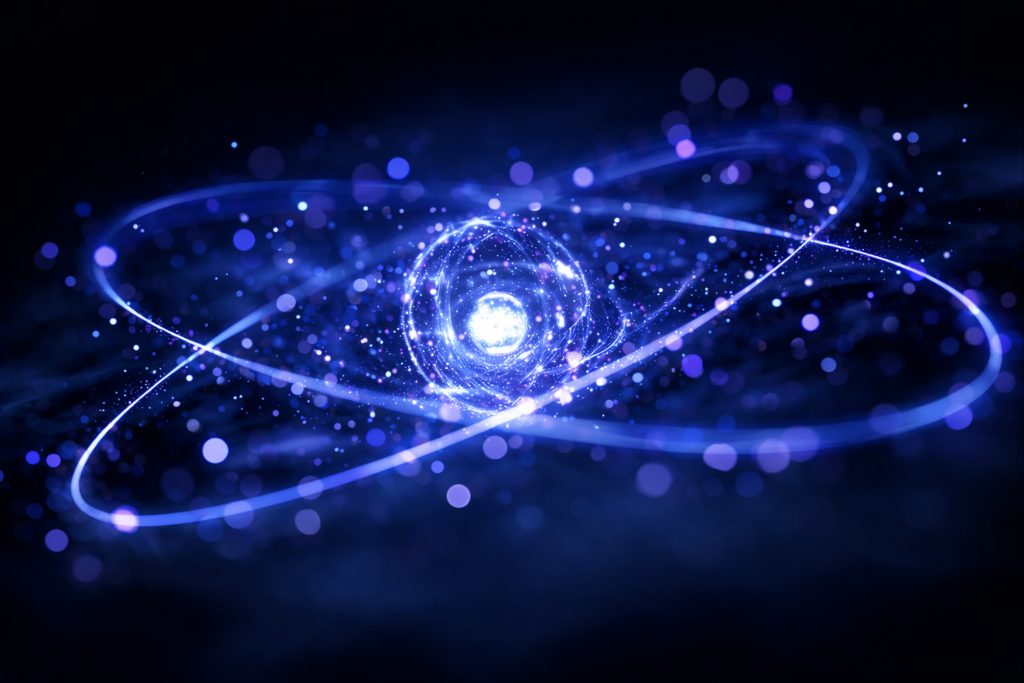Insider Brief:
- Superconducting quantum computers operate at cold temperatures to preserve qubit coherence, but this ultra-low temperature requirement limits scalability and accessibility in quantum technology.
- Developing quantum technology may require interdisciplinary insights from fields such as materials science, where exotic phases of matter like supersolids may unlock advances in high-temperature superconductors.
- Physicist Francesca Ferlaino’s team at the University of Innsbruck captured images of quantized vortices in a supersolid, an achievement that could inform room-temperature superconductor development and offer insights into the interiors of neutron stars.
- Supersolids, which combine properties of solids and superfluids, help reveal fundamental principles that could support more resilient quantum devices.
In the coldness of space, certain objects sit nestled among their stellar neighbors, immersed in an icy quiet that is positively alien to the room-temperature reality we inhabit. Such, too, is the state of superconducting qubits within the specialized dilution refrigerators that serve as their ultimate respite. It is within this almost unimaginable cold that qubits are allowed to, however briefly, exist undisturbed. Here superconducting circuits are permitted to conduct electricity without resistance, an ideal state that’s fundamental for maintaining quantum coherence. And it is here where qubits are able to exist in a state of superposition–a state simultaneously natural and incomprehensible.
This extreme environment is as much a testament to the ingenuity of scientists as it is a major Achilles’ heel in the pursuit of quantum advantage. The need for ultra-low temperatures presents a technical and economic barrier, challenging the scalability and accessibility of quantum technology. Ironically, the development of quantum technology is itself an NP-hard problem, demanding contributions from a wide network of scientific fields. While there are many directly dedicated to the progression of the technology itself, there are other stakeholders, either knowingly or unknowingly involved. Developments in materials science, especially in exotic phases of matter, can provide insights that further elucidate the world around us, ultimately affecting the development state-of-the-art technology.
For instance, consider superconducting qubits. Current architectures are limited by the delicate nature of cooling qubits to drastically low temperatures, but developments in room-temperature ( or we’ll even settle for higher-temperature) superconductors may lead to more stable and energy-efficient devices, making quantum computing more viable. So, how do we move from the current state of near-absolute-zero-computation to that at more sustainable temperatures? The answer is quite simple and clearly expected: mini tornados.

An Unyielding Pursuit of the Quantum Storm
Francesa Ferlaino, like many physicists who have become before her, and many who will come after, was told what she was doing was impossible. Her answer in the face of this skepticism is one worth noting for those looking to take part in profound discovery: “I think we can manage.”
Nestled in her lab between the towering peaks of the Austrian Alps, Ferlaino worked relentlessly to capture a rare quantum phenomenon in action–a hallmark sign of the ever-elusive supersolid. Thanks to her relentless pursuit of what she believed would come to be, we now have captured images evidence of a rare state of matter that may play into the development of higher-temperature superconductors, as well as answer other pending questions related to the interiors of pulsars.
Her journey to these results involved a meticulous, almost three-year-long “quantum-storm chasing” endeavor. Alongside her dedicated team, Ferlaino engineered an environment colder than deep space, guiding magnetic pulses to stir their quantum gas gently enough to observe vortex patterns without destabilizing the supersolid state. The feat required immense patience and precision due to its delicate nature. On an early Friday evening, after much anticipation, Ferlaino’s students confirmed the long-sought evidence, sharing a celebratory moment that marked the culmination of years of dedication.
In a Superposition of Solid and Fluid
In a world where the majority of us are not condensed matter physicists, we’re taught from an early age that there are three distinct phases of matter. However, as scientists explore further the fundamental nature of matter, they uncover exotic phases that challenge this neat classification, such as supersolids. So, what exactly is a supersolid, and how does it blur the line between solid and fluid?
As explained in a recent Quanta article, a supersolid is “simultaneously the stiffest of solids and the flowiest of fluids.” Imagine a cube of gelatin. At a glance, it seems solid; you can slice it, stack it, or even hold it in your hand without it losing shape. But if you poke it gently, you’ll see it jiggle, hinting at a fluid-like flexibility just beneath its solid surface. Now, imagine if this gelatin could flow like water, moving without resistance, all while maintaining its solid structure. This state—both rigid and flowing—is a bit like a supersolid.
In a supersolid, atoms arrange themselves in a stable, crystal-like structure, much like the particles in a solid. However, under certain conditions, they also act like a fluid, allowing parts of the structure to move in perfect synchronization without friction. It’s as if the solid structure and the flowing wave exist simultaneously, each keeping its unique properties while coexisting in harmony. This blend of solidity and fluidity allows supersolids to exhibit some of the strangest behaviors in physics, like forming tiny tornadoes or vortices when rotated.
The Symbiosis of Supersolids and Quantum Technology
The study of supersolids and their unique properties has implications for the development of quantum technology, especially as it relates to superconducting qubits that require extremely low temperatures to function effectively. Advancements in understanding high-temperature superconductors could lead to qubits that operate at higher temperatures, leading to more stability and efficiency. This is important for preserving quantum coherence, as superconductors conduct electricity without resistance, minimizing energy loss.
Similarly, as noted in a recent Nature article, discovering materials that exhibit superconductivity at higher temperatures could reduce the need for such extreme cooling, making quantum devices more practical and energy-efficient.
Also, the vortices observed in supersolid experiments are analogous to those in superconductors, where vortex behavior influences magnetic and electrical properties, as highlighted in a recent publication on vortex properties in superconductors from the Journal of Applied Physics . Gaining insights into vortex formation and dynamics can inform strategies to further stabilize superconducting materials, and in turn, potentially improve the performance of quantum devices.
Overall, exploring the properties of supersolids, researchers may be able to uncover fundamental principles that may lead to the development of more resilient and accessible quantum technologies.
A Long Road to Discovery
The concept of a supersolid—a phase of matter that combines the rigid structure of a solid with the frictionless flow of a superfluid—was first proposed in 1957 by physicist Eugene P. Gross, as noted by Quanta. It has been suggested that under certain conditions, solid helium-4 could exhibit superfluid properties, leading to a state where matter maintains a crystalline structure while allowing atoms to move without resistance.
Over the following decades, the theoretical framework for supersolids was further developed. In 1969, Russian physicists Alexander Andreev and Ilya Liftshitz introduced the idea that vacancies (missing atoms) in a solid helium lattice could facilitate superfluid-like behavior within the solid matrix.
Experimental efforts to detect supersolidity in solid helium began in the 1970s but faced significant challenges. In 2004, Physics World reported on researchers Eun-Seong Kim and Moses Chan who announced observations that were initially interpreted as evidence of supersolidity in helium-4. However, subsequent studies raised questions about these findings, attributing the observed phenomena to other effects such as changes in the material’s elasticity.
In recent years, advancements have been made using ultracold atomic gases. In 2017, teams at MIT and ETH Zurich created supersolid states in Bose-Einstein condensates by manipulating interactions between atoms using lasers and magnetic fields.
These experiments provided clearer evidence of supersolid behavior, making progress in the field. This journey from theoretical prediction to experimental realization of supersolids highlights the complexities and challenges in understanding and observing exotic phases of matter.
A Quantum Milestone: Capturing Vortices in a Supersolid for the First Time
In this most recent study, published in Nature, Francesca Ferlaino and her team at the University of Innsbruck sought to provide the final piece of evidence for supersolidity: the presence of quantized vortices in a supersolid state. The team achieved this through magnetostirring, a method of rotating a dipolar quantum gas by manipulating magnetic fields. This approach builds on prior successes in inducing vortices in Bose-Einstein condensates, but had never been successfully applied to supersolid phases due to their complex and delicate structure.
The experiment involved cooling a gas of dysprosium atoms to form a dipolar supersolid with four density peaks, or “droplets,” in a two-dimensional configuration. Using magnetostirring, the team rotated the magnetic field around the gas, effectively “stirring” the supersolid without disrupting the quantum state. By carefully calibrating rotation frequencies, they were able to observe distinct vortex structures forming within the interstitial spaces between these droplets, captured through a special imaging technique that momentarily reverted the supersolid into a Bose-Einstein condensate to increase vortex visibility.
These observations were a confirmation of supersolidity, making it the first time vortices had been visualized in such a state. The findings not only support the theoretical framework of supersolids but may also lead to further exploration into their unique properties, which could have applications in understanding vortex dynamics in fields ranging from high-temperature superconductors to the extreme environments within neutron stars.
A Strange New World
Superconducting quantum computers operate in an environment colder than outer space, a necessary yet challenging feat of engineering that reflects both the promise and limitations of today’s quantum technology. The pursuit of quantum advantage relies not only on developments within quantum computing but also on advancements across physics, materials science, and other fields.
In their journey to understand exotic phases of matter, scientists like Francesca Ferlaino have achieved feats once thought impossible, capturing evidence of supersolid vortices that could lead to the development of room-temperature superconductors. Such discoveries make others clear: the world is much stranger than it appears, choose persistence in the face of impossibility, and interdisciplinary collaboration may yet be the key to realizing quantum computing’s potential.

















